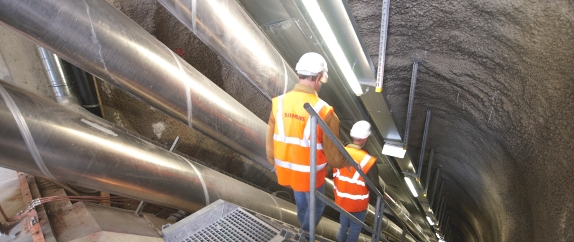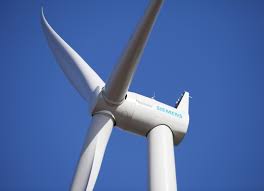
Gas Insulated Lines (GIL) provide technical, environmental, and operational features that make them a good choice wherever the transmission of extra-high voltage and currents are needed in restricted spaces.
Siemens develops a gas-insulated transmission line for carrying large amounts of energy at high DC voltages. Berlin Technical University and Dresden University of Applied Sciences, among others, are working under the lead management of Siemens on developing a new gas-insulated DC transmission line, known as the DC CTL (Compact Transmission Line for Direct-current High Voltage) for laying underground. The new line is designed to transmit up to five gigawatts (GW) of power per system. The German Federal Ministry for Economic Affairs and Energy (BMWi) is providing €3.78 million in this development project.
The DC CTL will be based on the technology of the existing gas-insulated transmission line (GIL), which consists of two concentric aluminum tubes. A mixture of gases is used as the insulating medium. Until now, the GIL has only been available for alternating current (AC). The challenge for the DC CTL is posed by the special design of the components taking into account their specific properties at high direct voltages. Because of its significantly higher current-carrying capacity of up to 5000 amperes (A), the DC variant of the GIL would not only be able to transmit the required amounts of electrical power more efficiently compared with cable in the future grid upgrade. It would also make power transmission routes more environmentally compatible and cheaper.
Expansion of the transmission grid is necessary if 80% of demand for electrical energy in Germany is to covered by renewable energy sources by 2050. The power generated by wind turbines in the north of the country and off the German coast will need to be transported as efficiently as possible to the load centers in southern Germany. DC transmission is the method of choice for doing this because of its low electrical losses compared with AC transmission.

Power from turbines north of Germany will need to be transported as efficiently as possible to the load centers in the south, making DC transmission the best choice.
Developing the grid using high-voltage direct-current (HVDC) transmission technology with overhead power lines and gas-insulated DC transmission lines buried underground over certain sections could be implemented using considerably less resources than three-phase technology.
“The underground DC transmission line is of significance for Germany’s transition to a new energy mix because its development will initially take place in Germany. Later on, inquiries from other countries in the EU or elsewhere in the world would be quite possible. In any case, with development of the gas-insulated DC transmission line Germany will play a pioneering role in the design of future energy transmission systems,” said Denis Imamovic, who is responsible for gas-insulated transmission systems at Siemens Energy Management Division.
Integration of renewable energy sources in existing power transmission and distribution systems poses a major challenge for Germany’s energy transition. The continuation of overhead power routes sectionwise underground in the form of a gas-insulated transmission line represents a key piece of the route planning mosaic, since possible corridors for new overhead lines are restricted due to existing buildings.
Gas-insulated DC lines can handle the power from an overhead line with the same number of conductors. This means that the substations and transmission corridors can be designed to take up less space, which makes them more cost-efficient.
Use of the DC-GIL will also allow the advantages of gas-insulated transmission technology to be exploited for the new HVDC multi-terminal systems and networks as well. This would make the vision of a transmission grid with superimposed DC a reality. HVDC systems in conjunction with gas-insulated DC transmission lines routed sectionwise underground are perfectly suited as a key technology for this.
Siemens
www.energy.siemens.com
Filed Under: News




